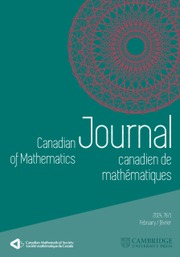Article contents
On Babinet's Principle
Published online by Cambridge University Press: 20 November 2018
Extract
Core share and HTML view are not available for this content. However, as you have access to this content, a full PDF is available via the ‘Save PDF’ action button.
In acoustic and electromagnetic theory much use is made of what is called the Principle of Babinet (1). The principle states that the problems of diffraction by an aperture, S, in a plane screen and by a plane obstacle occupying the position S, are equivalent. It is the intent of this paper to indicate how this notion of equivalent boundary problems, for partial differential equations, can be extended to other situations.
Information
- Type
- Research Article
- Information
- Copyright
- Copyright © Canadian Mathematical Society 1958
Footnotes
This work was sponsored in part by the Office of Naval Research contract N onr-222(25), University of California at Berkeley and in part by Air Force Office of Scientific Research contract AF-18(600)-1138, Carnegie Institute of Technology.
References
2. Carleman, T., Sur la résolution de certaines equations intégrales, Arkiv. for Mat., Astro, och Fys., 16 (1922), No. 26.Google Scholar
3. MacCamy, R. C., Linear boundary problems arising in the diffraction of water waves by surface obstacles, Part II, Technical Report No. 2, N. our-222(25) (University of California at Berkeley, Nov. 1955).Google Scholar
4. Rubin, H., The dock of finite extent, Comm. Pure and App. Math., 7 (1954), 317–344.Google Scholar
- 5
- Cited by

